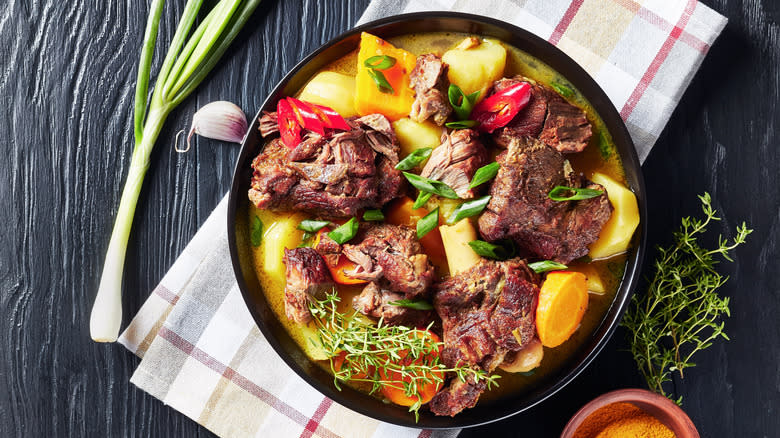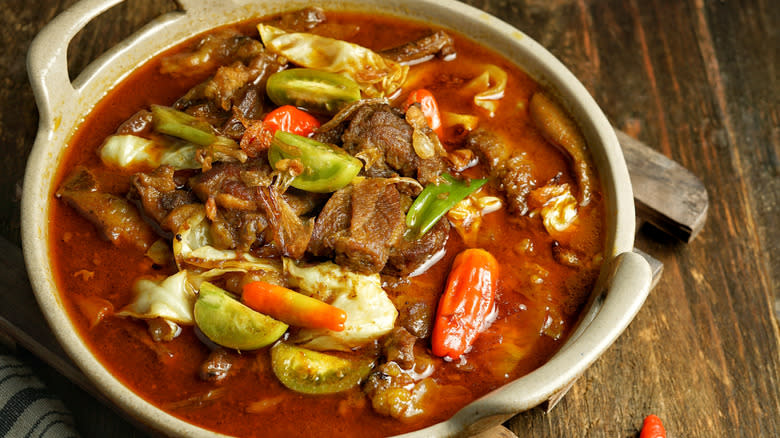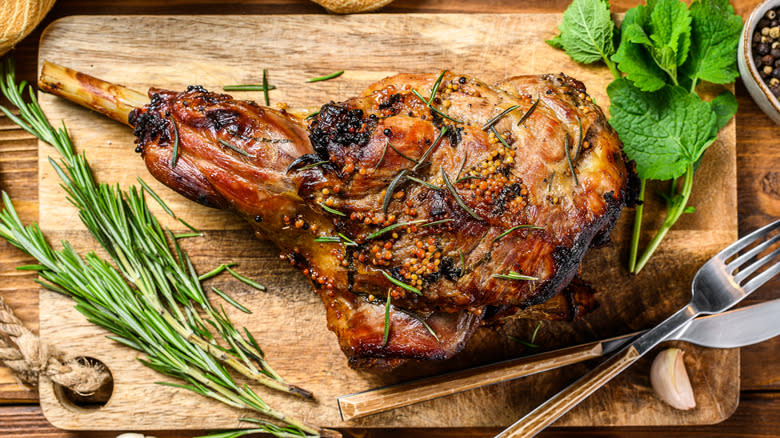The Common Mistake To Avoid When Cooking Goat Meat

Goats were among the first species to be domesticated some 10,500 years ago. Over the millenniums, goat meat became an everyday protein in many parts of the world, used in recipes such as goat water in Monserrat, barbacoa tacos in Mexico, or goat biryani hailing from India. Its popularity in the United States has even risen, and it is sometimes available for purchase in specialty stores. If you are considering cooking goat meat at home, a mistake to avoid is letting the meat dry out.
What does this mean? Goat meat is lean, which means it contains less saturated fats and cholesterol. However, while its leanness is seen as a nutritional advantage, it also means that goat meat can dry out quickly during cooking. To counter this, cooking goat meat in enough water is best to avoid an overly chewy eating experience. Keeping goat meat adequately moist is one reason it's a good idea to cook goat meat in marinades and stews to ensure you get a most tender and delectable dish.
Read more: 12 Underrated Types Of Fish You Should Try At Least Once
The Art Of Cooking Goat Meat

Whether you're planning to create a rich goat Osso Bucco or a warming curry, mastering the art of cooking goat meat is not as complicated as it might seem. When making stews or curries with goat meat, it is best to add adequate amounts of water, stock, coconut milk, or other liquids at the beginning of the cooking process.
Regard goat meat as you would a sponge. Imagine the goat meat soaking up all the intricacies from the spices slowly to impart the best possible flavors into a stew or curry. By topping off the liquids throughout the cooking process, you risk diluting the aromas and watering down the flavors, making them mild and weak.
Another factor that's almost as important as liquids is temperature. Remember these words: Cook goat meat low and slow. For the most succulent goat meat texture, it's a labor of love that demands low cooking temperatures for longer times. This allows the collagen inside the meat to break down, slowly relaxing the meat's tough texture.
Roasting And Frying Goat Meat

Preventing goat meat from drying out when roasting is slightly more technical than keeping it moist in curries and stew, but fret not: There are a few ways to dispel the culinary nightmare that is a tough bite of meat. Roasted goat leg can be a fantastic way to enjoy goat meat, both visually and as an eating experience. To help ensure it tastes as delicious as it looks, it's best to marinade and tenderize the meat before taking it anywhere near an oven.
Marinades with acidic ingredients like lemon juice or vinegar help break down the meat's proteins, which will help tenderize its texture. Alongside this, marinades with oils and fats are desirable as they'll help to lock in moisture. Making shallow cuts in the meat before applying the marinade and allowing it to marinate overnight are also beneficial steps toward a more tender bite. Once in the oven, keep an eye on the meat and either baste if it looks dry or wrap it in tin foil.
However you plan to cook goat meat, remember these golden words: low, slow, and moist. Keeping this advice front and center while cooking will help to make the finished dish a succulent meal.
Read the original article on Daily Meal.

 Yahoo Sports
Yahoo Sports 
